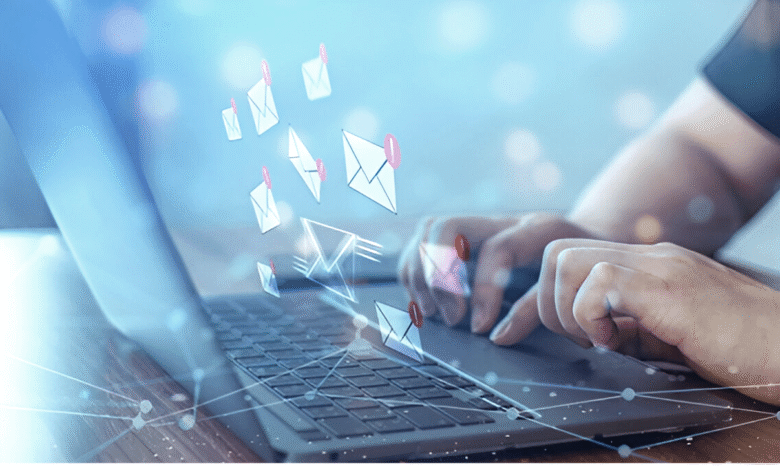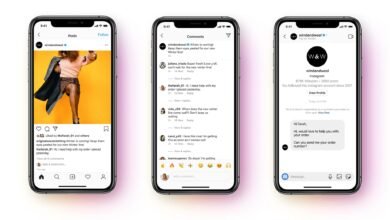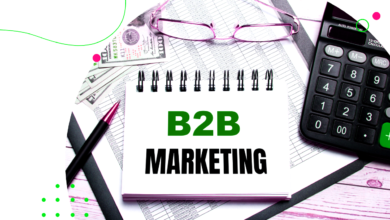Email Marketing Strategies That Work in the U.S
Email marketing strategies that work in the U.S Boost engagement & ROI with proven tactics for American audiences. Learn high-converting.

Email marketing strategies that work in the U.S. continue to be a cornerstone of successful digital campaigns, delivering unmatched ROI and customer engagement. With 4 billion daily email users worldwide and an average return of 36forevery1 spent, email remains one of the most cost-effective ways for businesses to connect with their audience. However, success requires more than just blasting generic messages it demands strategic segmentation, compelling content, and data-driven optimization tailored to American consumers’ preferences.
In today’s competitive landscape, businesses must leverage advanced tactics like personalization, automation, and AI-driven insights to stand out in crowded inboxes. From welcome sequences that boost retention to abandoned cart emails that recover lost sales, the right email marketing strategies that work in the U.S. can significantly impact conversions and brand loyalty. This guide explores proven techniques to help marketers craft high-performing campaigns that resonate with American audiences and drive measurable results.
Email Marketing Strategies That Work in the U.S
Unmatched ROI and Cost-Effectiveness
Email marketing delivers an exceptional return on investment, generating 36forevery1 spent on average. Unlike paid ads or social media promotions that require continuous budget allocation, email campaigns offer long-term value with minimal costs. Businesses of all sizes—from startups to Fortune 500 companies leverage email marketing because of its scalability and affordability.
Direct Access to Customer Inboxes
While social media algorithms limit organic reach, emails land directly in subscribers’ inboxes, ensuring higher visibility. Over 60% of U.S. consumers check their emails daily, making it one of the most reliable channels for customer communication. This direct line allows brands to control their messaging without worrying about platform restrictions.
Hyper-Personalization Drives Engagement
Modern consumers expect tailored experiences. Email marketing enables advanced segmentation based on demographics, purchase history, and browsing behavior. Personalized subject lines, dynamic content, and behavior-triggered automation increase open rates by up to 50% and conversions by 10-15%.
Automation Saves Time and Boosts Conversions
Automated workflows such as welcome series, abandoned cart reminders, and post-purchase follow-ups—nurture leads without manual effort. Companies using automation see 80% higher retention rates and recover 10-15% of lost sales through timely email sequences.
Measurable Performance with Data Analytics
Unlike traditional marketing, email campaigns provide real-time metrics like open rates, click-through rates, and conversion tracking. A/B testing subject lines, CTAs, and send times allows continuous optimization for better results.
Mobile Optimization Expands Reach
With over 60% of emails opened on mobile devices, responsive design is non-negotiable. Brands that optimize for mobile see higher engagement, as streamlined layouts and thumb-friendly buttons improve readability and clickability.
Compliance Builds Trust and Deliverability
Following U.S. regulations like the CAN-SPAM Act ensures legal compliance while improving sender reputation. Clear opt-out options, authentic sender names, and permission-based lists reduce spam complaints and increase inbox placement rates.
Integration with Multi-Channel Marketing
Email works seamlessly with other strategies social media retargeting, SMS follow-ups, and content marketing to create a unified customer journey. For example, pairing webinar invitations with email reminders increases attendance rates by 30-40%.
High Engagement Compared to Other Channels
Consistently Higher Conversion Rates
Email marketing delivers 3-6x higher conversion rates than social media, with transactional emails converting at 6.5% compared to Facebook’s 1.04%. This performance gap stems from email’s direct, intent-driven nature—subscribers actively opt-in and expect brand communication, unlike passive social scrolling. Advanced segmentation allows hyper-targeted offers that convert 50% better than generic promotions, while automated behavioral triggers (like abandoned cart emails) recover 10-30% of lost sales.
Superior Customer Retention Power
Email marketing drives 50% higher repeat purchase rates than social media by delivering personalized, value-driven content directly to engaged subscribers. Automated lifecycle campaigns – like post-purchase follow-ups and loyalty reward reminders boost customer retention by 80% compared to one-off promotions. Brands using segmented email nurturing see 3x longer customer lifespans, as tailored recommendations and exclusive offers foster ongoing relationships. While social algorithms constantly change, email’s consistent inbox presence maintains 86% better brand recall, making it the ultimate channel for turning first-time buyers into loyal advocates.
Unmatched ROI Performance
Email marketing delivers 36ROIforevery1 spent – outperforming all other digital channels by 2-4x. This staggering return comes from email’s unique combination of low costs (just pennies per send) and high conversion potential (3-6x better than social media). Paid search campaigns require 300% more budget to achieve similar results, while display ads need 400% more spend to match email’s performance. Even within the marketing mix, email contributes 23% of total sales for ecommerce brands – more than any single social platform.
Longer Shelf Life Than Social Content
Unlike social media posts that disappear within hours, emails remain accessible in subscribers’ inboxes for weeks or even months. Studies show 22% of email opens occur after the first 24 hours, with some campaigns still generating engagement 30+ days later. This extended visibility means your message stays available when customers are ready to act. For easy searching/reference. Through multiple decision cycles.
Future-Proof with AI and Interactive Tech
AI-Powered Personalization at Scale
Advanced machine learning algorithms now analyze customer behavior to generate hyper-personalized subject lines, product recommendations, and send-time optimizations. Tools like Phrasee and Persado use natural language processing to craft high-converting email copy that outperforms human-written content by 10-30%.
Predictive Analytics for Smarter Campaigns
AI-driven platforms like Seventh Sense and Optimove predict optimal engagement times for each subscriber, increasing open rates by 20-40%. These systems continuously learn from user interactions to automatically adjust sending frequencies and content strategies.
Interactive AMP Emails Revolutionize Engagement
Google’s AMP for Email technology is transforming static messages into dynamic, app-like experiences directly within the inbox. These interactive emails eliminate the need for click-throughs by allowing users to complete actions without ever leaving their email client.
Automated Behavioral Trigger Systems
Automated behavioral triggers revolutionize email marketing by delivering hyper-relevant messages at the perfect psychological moment. These AI-driven systems analyze hundreds of real-time customer signals – from abandoned carts and browsing history to CRM updates and even IoT device interactions – to trigger perfectly timed, contextually relevant emails.
Generative AI for Dynamic Content Creation
Generative AI is transforming email content creation by enabling marketers to produce highly personalized, scalable messaging in seconds. Platforms like Jasper and Copy.ai analyze customer data to automatically generate thousands of email variants tailored to different segments, locations, and behaviors. These tools can A/B test subject lines, body copy, and CTAs at unprecedented scale while continuously optimizing based on real-time performance data.
Read More: Email Marketing Strategies That Work in the U.S.
Conclusion
Email marketing strategies that work in the U.S. remain one of the most powerful tools for businesses to engage customers, drive sales, and build lasting relationships. By leveraging personalization, automation, segmentation, and data-driven optimization, brands can create highly targeted campaigns that resonate with American consumers. Staying compliant with regulations like the CAN-SPAM Act while embracing emerging trends—such as AI-powered content and interactive emails ensures long-term success in an ever-evolving digital landscape.
As consumer preferences and technology continue to shift, businesses must remain agile, testing new approaches and refining their strategies for maximum impact. Whether through compelling storytelling, dynamic offers, or seamless mobile experiences, the key to effective email marketing strategies that work in the U.S. lies in delivering value at every touchpoint. By focusing on relevance, timing, and measurable results, companies can turn email into a consistent revenue driver and a cornerstone of their marketing success.
FAQs
What is the best time to send marketing emails in the U.S.?
Studies suggest that mid-morning (10 AM–12 PM) and early afternoon (1 PM–3 PM) on weekdays yield the highest open rates, but A/B testing can help determine the optimal time for your audience.
How often should I send emails to my subscribers?
The ideal frequency depends on your industry and audience preferences. Generally, 1–2 emails per week strike a balance between staying top-of-mind and avoiding spam complaints.
How can I improve my email open rates?
Craft compelling subject lines, personalize content, segment your audience, and test different send times to boost open rates.
What’s the importance of email list segmentation?
Segmentation ensures that subscribers receive relevant content, improving engagement, click-through rates, and overall campaign performance.
How do I comply with U.S. email marketing laws?
Follow the CAN-SPAM Act by including an unsubscribe option, using accurate sender information, and avoiding deceptive subject lines to stay compliant.











